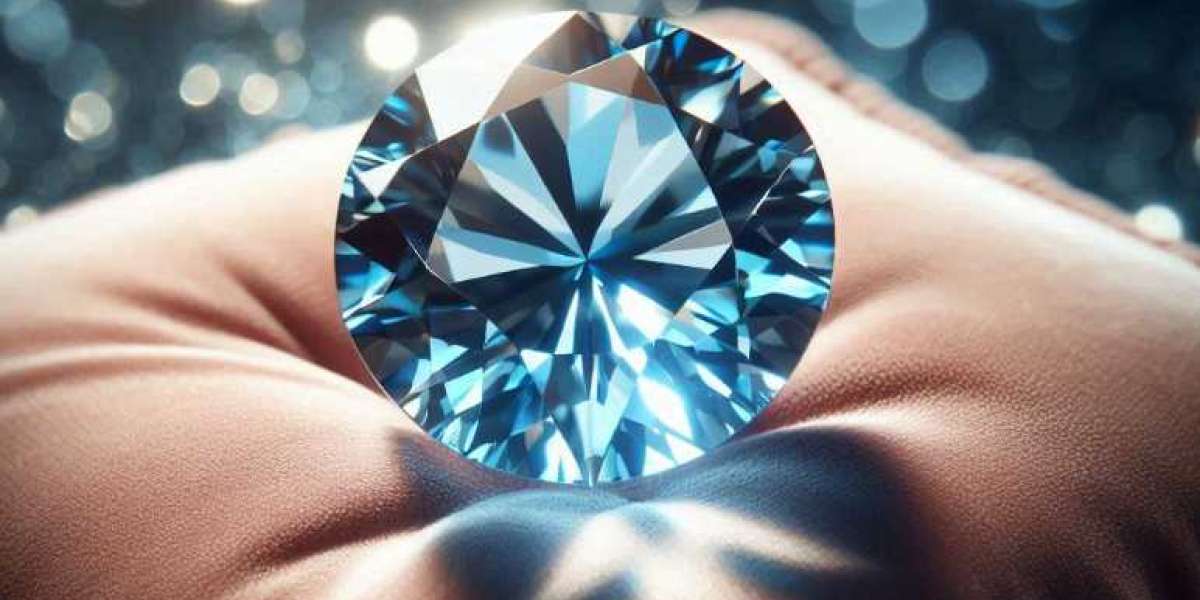Purchasing a diamond is a significant investment, whether it's for an engagement ring, a gift, or an heirloom piece. With so many factors to consider, it's easy to feel overwhelmed. However, understanding the essential elements of diamond selection will ensure you make a smart and informed choice. In this article, we will cover what you need to know before purchasing a diamond, with a special focus on Blue Nile Diamond, a trusted name in online diamond retail.
1. The 4 Cs of Diamonds
Before making any purchase, it’s essential to understand the 4 Cs—cut, color, clarity, and carat weight. These four characteristics determine a diamond’s overall quality and its price. Here’s a breakdown of each:
- Cut: The cut refers to how well the diamond has been shaped and faceted. A well-cut diamond reflects light beautifully, giving it brilliance and sparkle. The quality of the cut can be the most important factor in how a diamond looks. A poorly cut diamond, even if it has high clarity or color, can appear dull or lifeless. The cut is graded from Excellent to Poor, with the highest grades commanding the highest prices.
- Color: The color of a diamond is graded on a scale from D (colorless) to Z (light yellow or brown). Colorless diamonds are the rarest and most valuable, but diamonds with slight color can still appear nearly colorless to the naked eye. Understanding the color scale and what level of color suits your preferences and budget is important when selecting a diamond.
- Clarity: Clarity refers to the presence of internal or external flaws, known as inclusions and blemishes. The fewer imperfections a diamond has, the more valuable it is. However, most diamonds will have minor imperfections that are not visible to the naked eye. The clarity scale ranges from Flawless (FL) to Included (I), with the latter having noticeable imperfections.
- Carat Weight: Carat weight measures the size of the diamond. Larger diamonds are rarer and more expensive. It’s important to note that a larger diamond does not always mean better quality if other factors, such as cut and clarity, are compromised.
By understanding the 4 Cs, you will be in a better position to compare diamonds and decide what qualities are most important to you, depending on your budget and personal preferences.
2. Choosing the Right Diamond Shape
While the 4 Cs help determine a diamond’s quality, the shape of the diamond is equally important in its overall appearance. Popular shapes include:
- Round: The most traditional and popular choice, round diamonds offer maximum brilliance due to their perfect symmetry and numerous facets. They tend to be the most expensive because they are in high demand and require more raw material to cut.
- Princess: A square shape with sharp corners, the princess cut is the second most popular shape. It offers great brilliance and is often slightly less expensive than round diamonds.
- Emerald: Known for its rectangular shape and step-cut facets, the emerald cut showcases clarity more than other cuts. It’s more elegant but can highlight any imperfections due to its large, open table.
- Oval, Cushion, Radiant, Pear, and Asscher: Each of these shapes offers a distinct aesthetic. Consider the personal style of the wearer and the setting of the piece when choosing the right shape. Some shapes, like oval and pear, may appear larger than round diamonds of the same carat weight due to their elongated shape.
3. Certification and Grading
When purchasing a diamond, it’s crucial to ensure that the stone comes with a certification from a reputable grading organization, such as the Gemological Institute of America (GIA) or the American Gem Society (AGS). These organizations provide an unbiased assessment of the diamond’s 4 Cs and guarantee the stone’s authenticity.
You should always ask for a diamond's certification before purchasing, as it provides vital details about the diamond’s characteristics and value. Most reputable retailers, including Blue Nile Diamond, offer diamonds with certification from GIA or AGS, ensuring that you’re getting the quality you’re paying for.
4. Understanding Diamond Pricing
Diamond pricing is influenced by various factors, with the 4 Cs being the primary determinants. However, market demand, brand reputation, and the retailer's overhead costs can also play a role.
Retailers with a strong reputation, like Blue Nile Diamond, often offer competitive pricing due to their direct-to-consumer business model. By cutting out the middlemen typically involved in traditional jewelry stores, they pass the savings directly to the customer.
Additionally, diamond prices can vary based on the market value of precious metals (such as gold and platinum), which are often used in setting the diamond in rings or other jewelry. When purchasing a diamond, it’s also essential to consider these factors, as the setting will add to the overall price of the piece.
5. Where to Buy Your Diamond
Where you purchase your diamond is just as important as the diamond itself. Today, there are two primary avenues: traditional brick-and-mortar jewelry stores and online retailers.
- Traditional Jewelry Stores: Visiting a store allows you to see the diamond in person, which can help you assess its brilliance, color, and size. However, these stores tend to have higher overhead costs, which means you might pay a premium for the same quality diamond.
- Online Retailers: Online diamond retailers, such as Blue Nile Diamond, offer a wide range of diamonds at competitive prices. Shopping online allows you to easily compare diamonds based on the 4 Cs and find the best value. With an online retailer, you can often find better deals, and many reputable sites offer detailed certification, high-quality images, and virtual tools that help you visualize the diamond.
When purchasing online, it's important to check return policies, ensure the retailer offers certifications for the diamond, and read reviews to gauge the reliability of the service.
6. Diamond Settings and Customization
The setting plays a crucial role in how the diamond will be showcased. There are various options, such as:
- Solitaire: A single diamond set on a band, this classic setting emphasizes the stone’s brilliance and is timeless.
- Halo: A diamond surrounded by smaller diamonds, giving the appearance of a larger stone and adding extra sparkle.
- Three-Stone: Symbolizing the past, present, and future, this setting features three diamonds, often with a larger center stone and two smaller side stones.
- Pavé: A setting where the band is encrusted with tiny diamonds, providing a continuous sparkle around the main diamond.
Many retailers, like Blue Nile Diamond, offer customization options where you can choose the setting style, metal type (such as platinum, white gold, or yellow gold), and other features to create a truly unique piece.
7. Warranty and Insurance
Diamonds are valuable, and protecting your investment is essential. Most reputable retailers offer warranties to cover any potential issues with the diamond or setting. Blue Nile Diamond offers a warranty for their jewelry that covers defects in craftsmanship and provides repair services.
Additionally, it’s wise to insure your diamond, particularly if it’s an engagement ring or another high-value piece. Jewelry insurance will cover loss, theft, or damage to the diamond, ensuring you don’t face an irrecoverable financial loss.
8. Popular Brands: Blue Nile Diamond
When it comes to purchasing a diamond, brands like Blue Nile Diamond have built a reputation for offering high-quality diamonds at competitive prices. Blue Nile operates primarily online and offers a broad range of diamonds certified by reputable organizations like GIA and AGS. Their user-friendly website allows customers to easily search for diamonds based on specific criteria, including the 4 Cs, shape, and price range.
Blue Nile is also known for offering excellent customer service, fast shipping, and a 30-day return policy. They also offer free resizing and ring engraving, which are great options for those looking for a more personalized experience.
Conclusion
Purchasing a diamond is a meaningful and significant decision, and by understanding the 4 Cs, certification, pricing, and choosing the right retailer, you can make an informed and confident purchase. Whether you opt for a traditional jeweler or an online retailer like Blue Nile Diamond, ensuring the quality and value of your diamond will help you make the perfect selection. Always prioritize quality and authenticity to ensure that your investment will be treasured for years to come.











